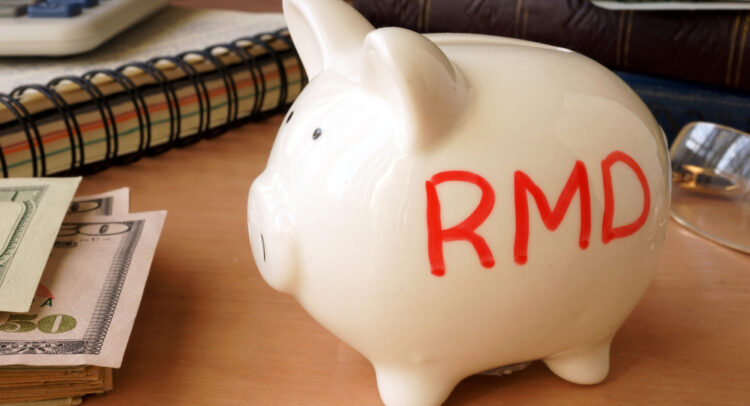Mortgage Calculator
Home Price
$
Down Payment
$
d
%
Loan Term
*
Year
Interest Rate
%
Total principal & interest = $1,825.19
Monthly payment breakdown
Total principal & interest = $1,825.19
Property tax
+
Property tax
$
Homeowner's insurance
+
Homeowner's insurance
$
PMI
+
PMI
$
HOA fees
+
HOA fees
$
Total monthly payment
= $2,171.19
How to Calculate Your Mortgage PaymentsCalculating mortgage payments can seem daunting, but with TipRank's Mortgage Calculator, you can effortlessly navigate through the numbers.
Home Price
Enter the purchase price if you're buying a new home, or the current market value if you're refinancing your existing property.
Down Payment
Specify the amount you plan to pay upfront if you're buying, or the equity you've built up if you're refinancing. Down payment refers to the initial lump-sum payment towards the home, while home equity is the property's value minus any outstanding loans. You can input this as either a dollar amount or a percentage.
Loan Term
Choose the duration of your loan. Common terms are 30, 20, 15, or 10 years, but you're free to select a term that suits your financial situation.
Interest Rate
Input the interest rate you anticipate. Keep in mind that rates may differ depending on whether you're purchasing a new home or refinancing an existing loan. As you populate these fields, the calculator will dynamically update its calculations to display your estimated monthly principal and interest payments.
Glossary of Mortgage Terms
Amortization
The process of paying off a loan over time through regular payments. An amortization schedule details how much of each payment goes toward the principal and how much goes toward interest.
Annual Percentage Rate (APR)
The annual rate charged for borrowing, expressed as a single percentage that represents the actual yearly cost of the loan.
Closing Costs
One-time fees and expenses paid at the closing of a mortgage transaction, separate from the loan itself.
Down Payment
The initial upfront payment made when buying a home, usually expressed as a percentage of the total property price.
Equity
The value of ownership built up in a property, calculated by taking the current market value minus the remaining mortgage balance.
Escrow
An account held by a third party to manage the payment of property taxes and insurance.
Fixed-Rate Mortgage
A mortgage with an interest rate that remains the same for the entire term of the loan.
Interest
The cost of borrowing money, typically expressed as an annual percentage rate.
Loan-to-Value Ratio (LTV)
The ratio of the loan amount to the appraised value or sales price of the property, expressed as a percentage.
Mortgage Insurance
Insurance that protects the lender in case the borrower defaults on the loan. Typically required for loans with an LTV ratio greater than 80%.
Principal
The original amount of money borrowed, not including interest.
Refinancing
The process of obtaining a new mortgage to replace an existing one, often to obtain a lower interest rate or to convert equity into cash.
Term
The length of time over which the loan must be repaid. Common terms are 15, 20, or 30 years.
Underwriting
The process lenders use to evaluate the risk of offering a mortgage to a borrower, including creditworthiness and the value of the property.
Variable-Rate Mortgage (or Adjustable-Rate Mortgage)
A mortgage with an interest rate that may change periodically depending on market conditions, affecting the monthly payment.
Understanding the Mortgage Payment FormulaWhen it comes to calculating your mortgage payments, a specific formula is used to determine how much you'll owe each month. While our mortgage calculator handles these calculations automatically, knowing the formula can help you understand the financial mechanics behind your loan.
The Formula
The standard formula to calculate a monthly mortgage payment is:
Where:
= Monthly payment
= Principal loan amount
= Monthly interest rate (annual interest rate divided by 12)
= Number of payments (loan term in months)
Breaking Down the Formula
This is the amount you'll pay each month, which includes both the principal and the interest.
This is the initial amount borrowed to purchase the home.
Your annual interest rate divided by 12 (the number of months in a year). For example, if your annual interest rate is 6%,
the monthly rate would be .
the monthly rate would be .
This is the total number of monthly payments you'll make over the life of the loan. For a 30-year term, n = 30 × 12 = 360.
Example
Let's say you have a $300,000 loan with a 4% annual interest rate, and you've chosen a 30-year term.
To find the monthly interest rate, you would divide the annual rate by 12: or 0.33% in decimal form.
Plugging these into the formula, your monthly payment would be calculated as follows:
To find the monthly interest rate, you would divide the annual rate by 12: or 0.33% in decimal form.
Plugging these into the formula, your monthly payment would be calculated as follows:
In this example, your estimated monthly mortgage payment would be approximately $1,432.25.
FAQs
What is a mortgage calculator?
A mortgage calculator is an online tool that helps you estimate your monthly mortgage payments based on various factors such as loan amount, interest rate, and loan term.
Who should use this mortgage calculator?
This calculator is useful for anyone looking to buy a new home, refinance an existing mortgage, or gain a better understanding of their current or potential mortgage payments.
How do I use the mortgage calculator?
Simply enter the home price, down payment, loan term, and interest rate into the appropriate fields. The calculator will then display your estimated monthly mortgage payment.
What does the monthly payment include?
The monthly payment estimate includes both the principal and the interest. It does not include property taxes, homeowners insurance, or any potential mortgage insurance.
Can I calculate payments for different loan terms?
Yes, you can select different loan terms to see how it affects your monthly payment and the total amount paid over the life of the loan.
Does the calculator account for variable interest rates?
No, this calculator is designed for fixed-rate mortgages. For variable-rate mortgages, the interest rate and payments may change over time.


















